Portuguese champions Benfica fell to a 2-1 home defeat to Bundesliga leaders RB Leipzig in their first meeting in group G of this year’s UEFA Champions League.
In what was initially a tight encounter, certain patterns emerged in the tactics of both sides which set the scene for an exciting finish as all three goals were scored in the closing 20 minutes of the game.
In this tactical analysis of Tuesday’s game, we will compare the tactical approaches adopted by each team and analyse how these developed over the course of the tie.
The lineups
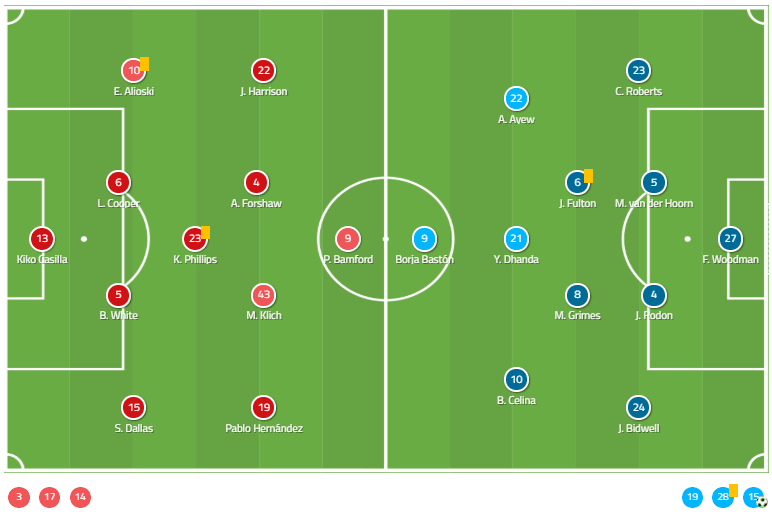
With first-choice right-back André Almeida unavailable through injury, Bruno Lage handed a first-team debut to 18-year-old Tomás Tavares, yet another exciting prospect to emerge from the Benfica academy. Much as he did in the Europa League last season, Lage chose to rotate his team slightly, with Argentinian winger Franco Cervi coming in for Rafa Silva and the highly-rated 20-year-old forward Jota appearing up front in place of Haris Seferović.
Leipzig manager Julian Nagelsmann also made changes following Saturday’s 1-1 draw with Bayern, with midfielder Diego Demme returning to the starting lineup whilst Lukas Klostermann was left on the bench. The young German coach also switched shape after using a back three at the weekend, this time lining up in the narrow 4-2-2-2 formation Leipzig are best known for.
Leipzig press hard and fast
Despite being the away team, Leipzig came to take the game to Benfica and they looked to make their message clear in the way that they pressed the hosts right from the onset. The German side were not necessarily interested in always pressing Benfica’s goalkeeper and centre-backs (they only did this occasionally) but they did look to make sure that Benfica had as little time on the ball as possible in the middle third of the pitch.
By pressing Benfica intensely once they approached the half-way line, Leipzig looked to ensure that the Portuguese hosts always felt hurried on the ball, which led to several mistakes. The intensity and tempo of Leipzig’s pressing meant that Benfica were simply unable to progress the ball through midfield and up to the forwards.
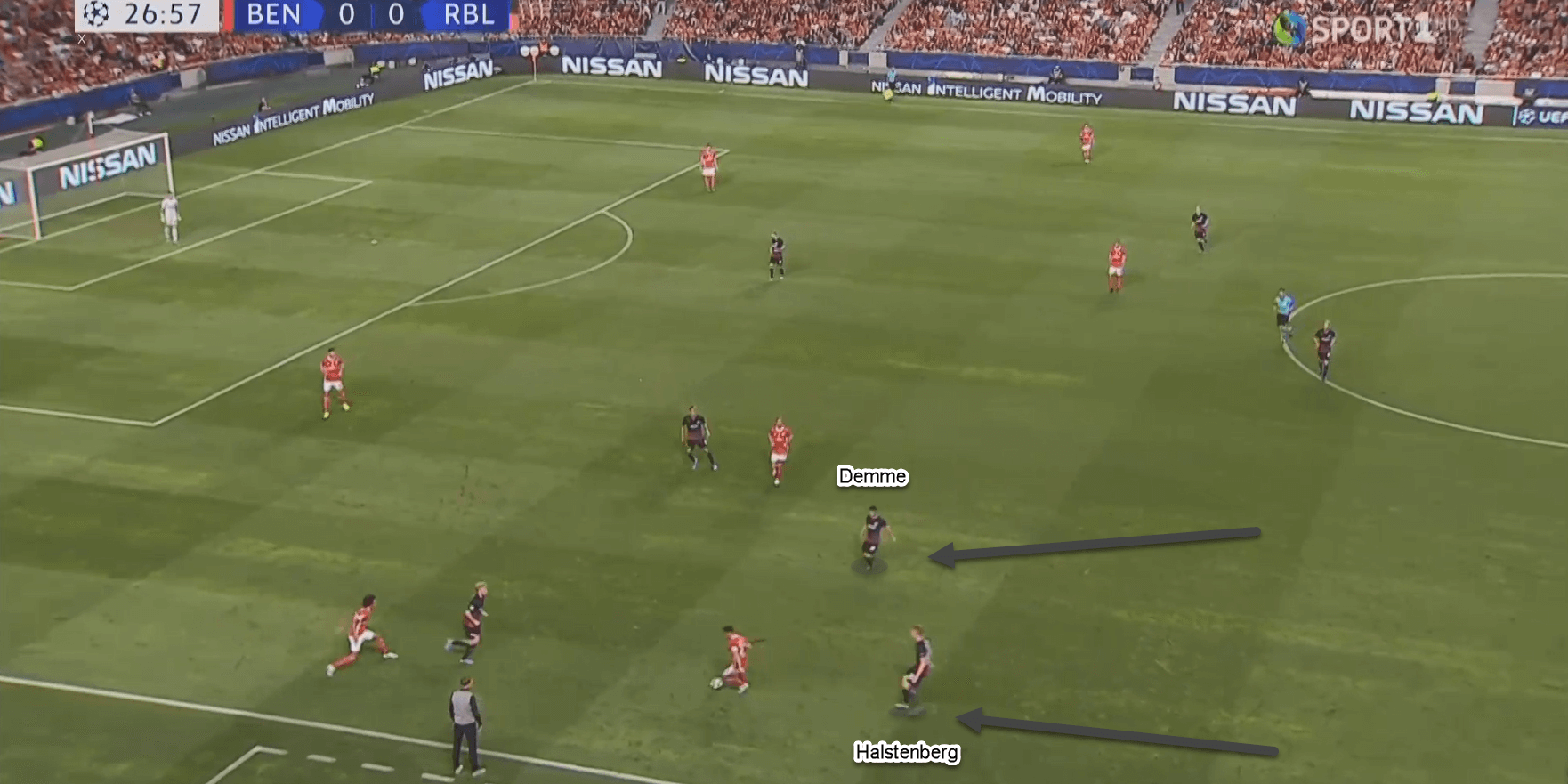
As we can see from the image above, one of the ways Leipzig looked to throttle Benfica was to get extremely tight to them on the wings, even if this meant pushing the full-back up into the opposition’s half (as was the case here with Halstenberg).
The idea was to put Benfica’s midfielders under so much pressure that they would have no time to play progressive passes and no space into which to dribble forwards with the ball.
Should Benfica somehow manage to beat this first stage of the press, they would look to find their young forward Jota, who would come deep in between the lines to receive the ball. Yet, Leipzig were prepared for this and had a plan to stop the Portuguese under-21 international. In order to close him down as quickly as possible, a centre-back would step out and a midfielder would drop back in order to trap Jota in a pincer movement.
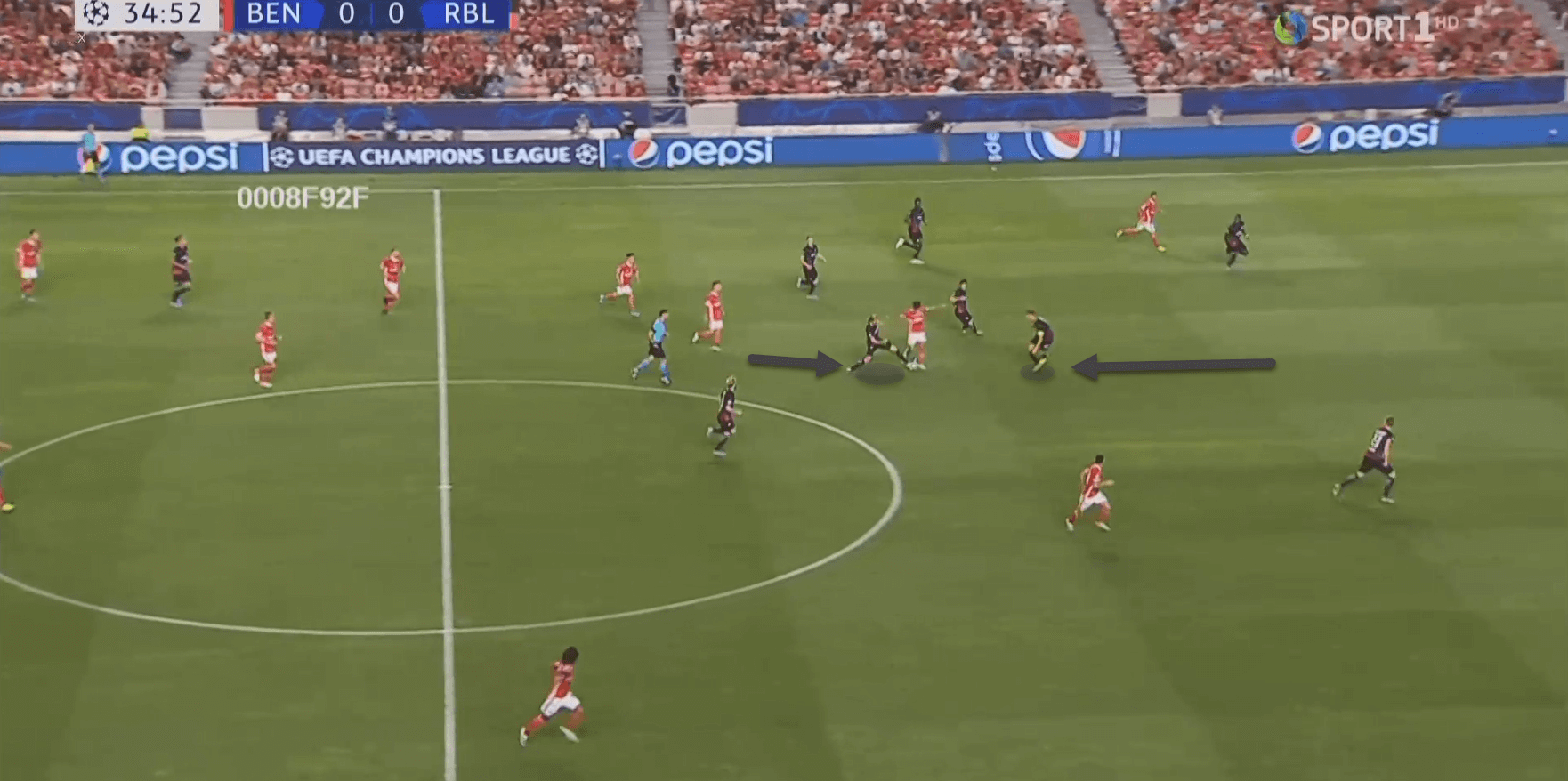
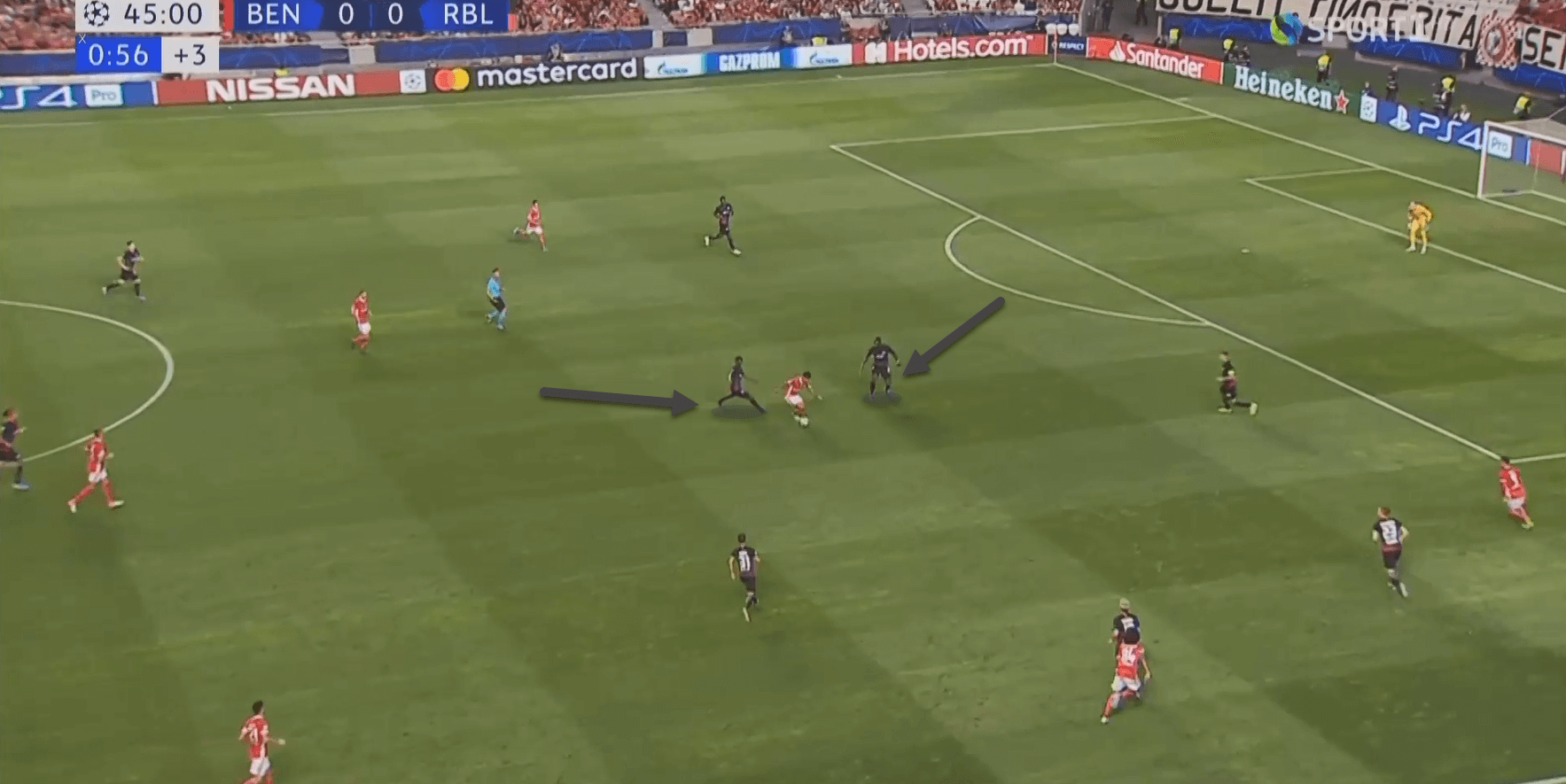
By restricting Benfica from progressing the ball through midfield and down the flanks, as well as cutting off supply to the striker dropping deep, Leipzig managed to effectively stifle the hosts’ game plan and slowly started to take control of the game. This prompted Benfica to try a different approach, which we will come to next.
Benfica’s change of strategy
In the opening stages, Benfica’s approach had in fact been quite similar to that of Leipzig’s as the hosts also looked to harass and hurry Nagelmann’s men in the middle third of the pitch. This was in no small part thanks to the presence of hard-tackling midfielder Ljuobomir Fejsa, who put in an all-action display covering large amounts of ground as he warded off any intruders into his midfield zone.
However, as mentioned in the previous section, Benfica found that when they had the ball they quickly lost it again as Leipzig prevented Benfica from getting a grip on the game. This is demonstrated in the graph below, which shows Benfica’s possession statistics over the course of the game.

As this graph shows, Benfica ceded more and more possession to the visitors and this meant that they began to favour structure over pressing as they tried to make it more difficult for Leipzig to break them down.
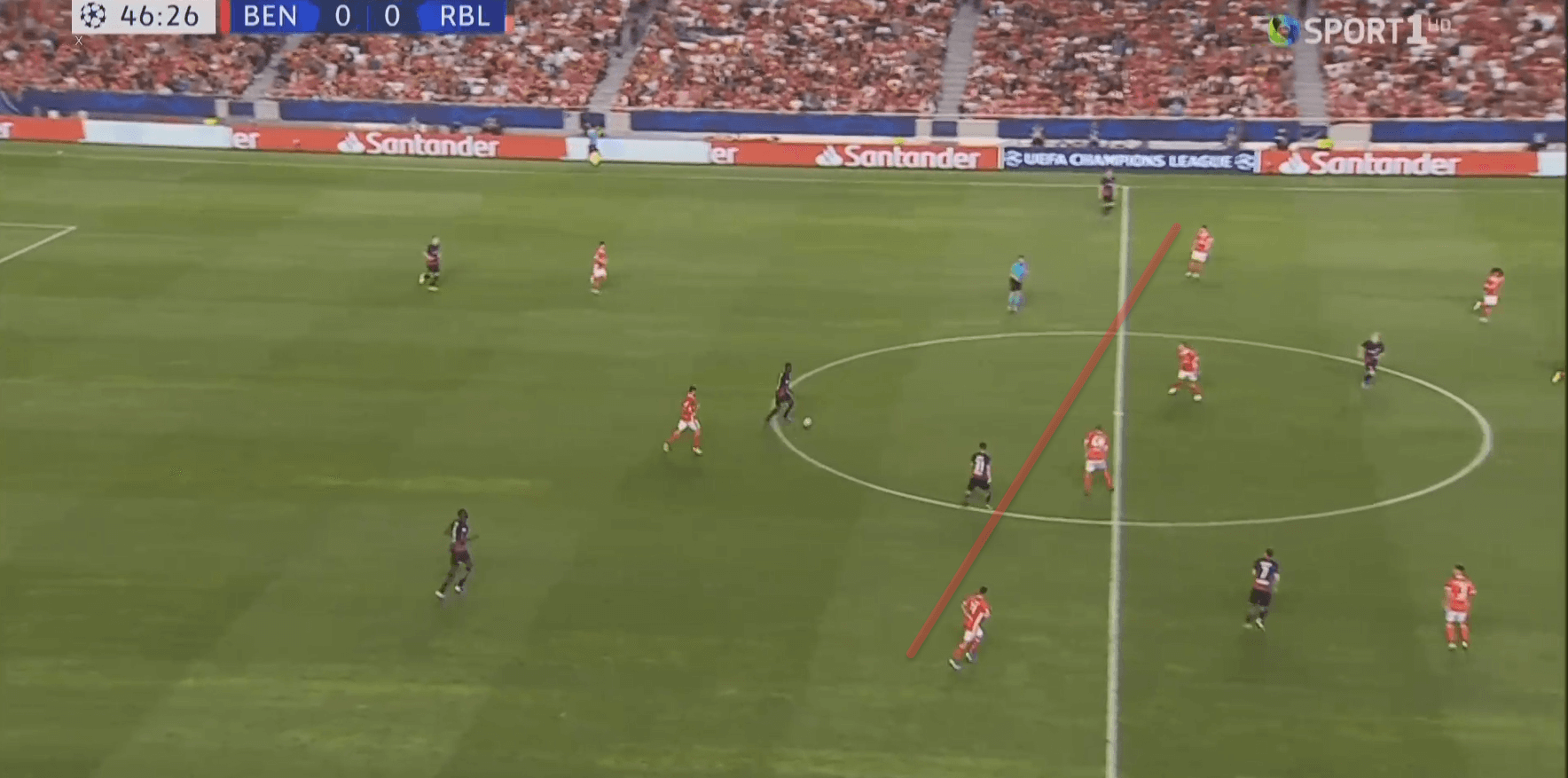
In the above image from the beginning of the second half, we see how Benfica have stopped trying to actively press Leipzig and are instead challenging them to try and break down their tight midfield block of four.
This did in fact turn out to be quite a positive move for Benfica. This is because the further back they defended, the more space opened up ahead of them in order to hit Leipzig on the counter-attack.
Counter attacking is a strategy that naturally suits Benfica, who have pacey wide players such as Cervi, Rafa and left-back Grimaldo. In league games, Benfica can often be seen breaking forward in numbers in lightning fast counter-attacks and this Champions League game was no different. The hosts instinctively knew that their best chance bet would be to play the ball out wide into the spaces left open behind RB Leipzig‘s full-backs and this is exactly what they did.
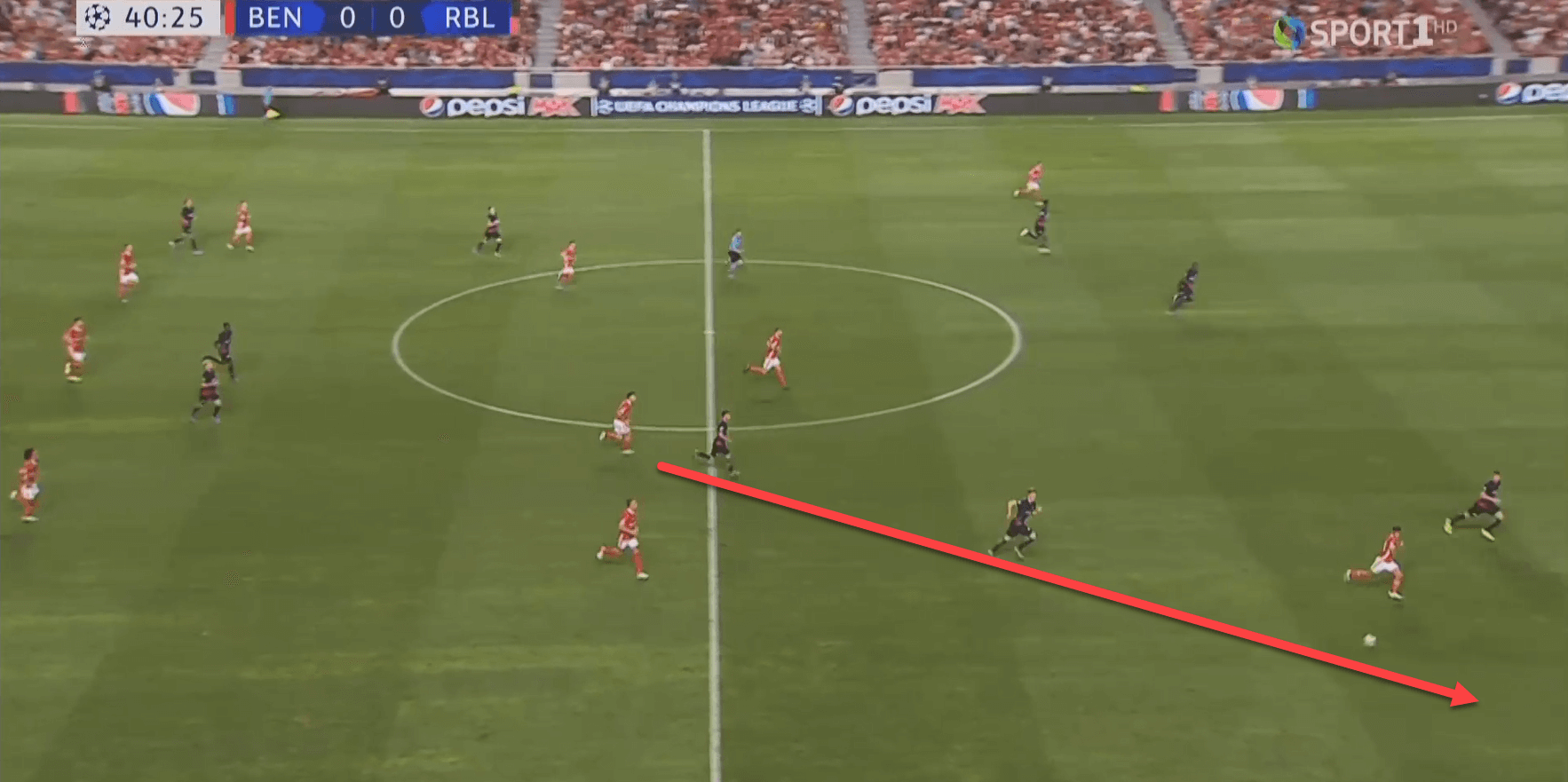

Despite Benfica looking a potent threat on the counter-attack, it was Leipzig who would draw first blood as German striker Timo Werner put the away side ahead in the 69th minute after some clever link-up play with striker partner Yussuf Poulsen.
Werner would double Leipzig’s lead in the 78th minute, through a goal which requires some specific analysis, since it came about due to a particular weakness in Benfica’s set-up that we will address next.
Ljuobomir Feja: The chink in Benfica’s armour?
As we mentioned earlier, Benfica’s Serbian midfielder Fejsa is a real asset in the rough and tumble of a midfield battle due to his combative qualities and relentless fitness. However, it appears that the 31-year-old’s lust for the ball might get him into trouble in situations where positional discipline is required.
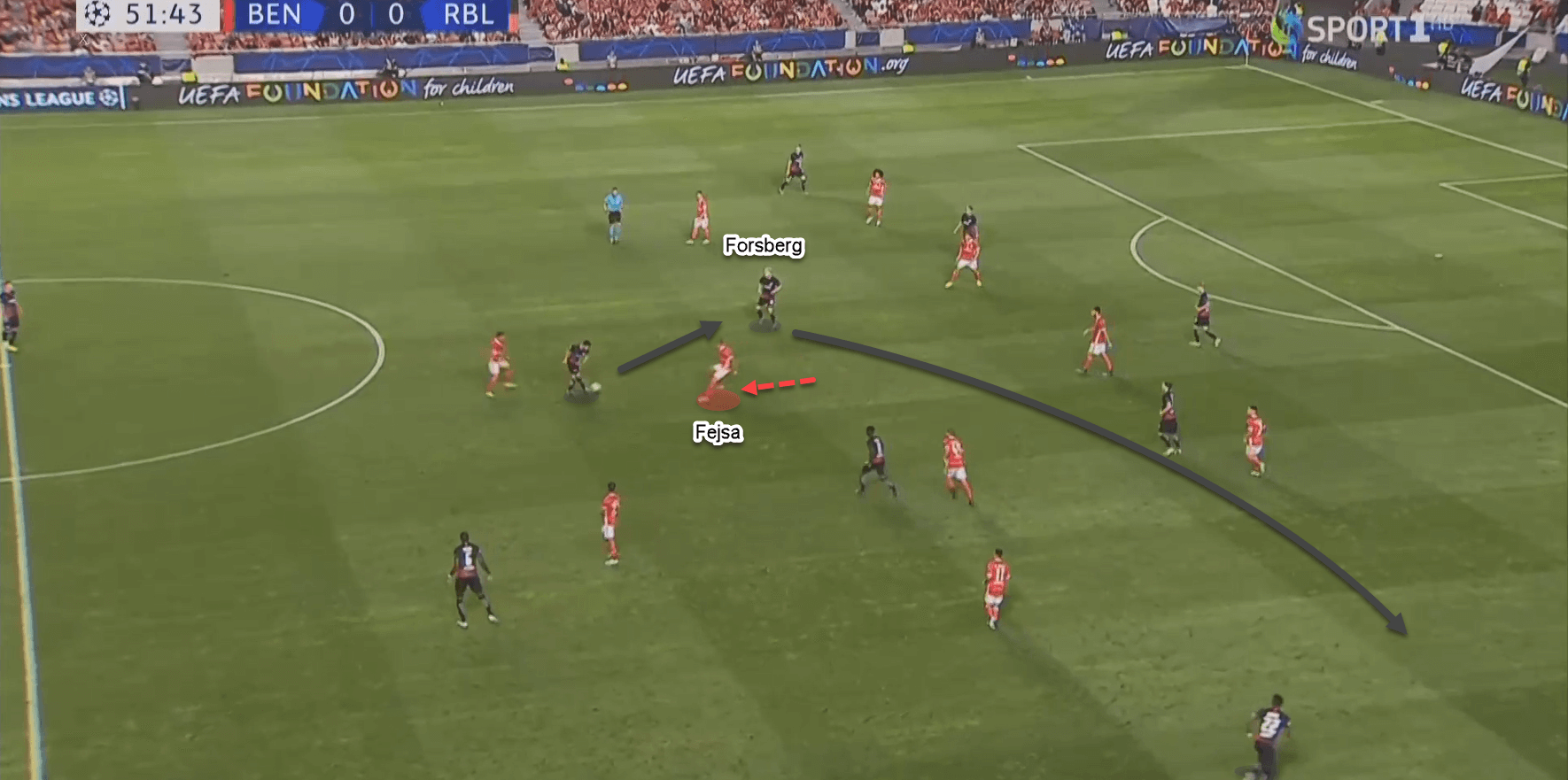
In the image above from the 52nd minute, notice the amount of space Fejsa leaves behind him as he steps out to engage the man on the ball, Demme. The midfield line of four is completely broken and Demme is able to play a simple ball through to playmaker Emil Forsberg who has all the time and space in the world to switch the play out to the right flank.
This should have come as a warning sign to Benfica, as just 16 minutes later an almost identical scenario would play out, this time resulting in a goal, Leipzig’s second of the night.
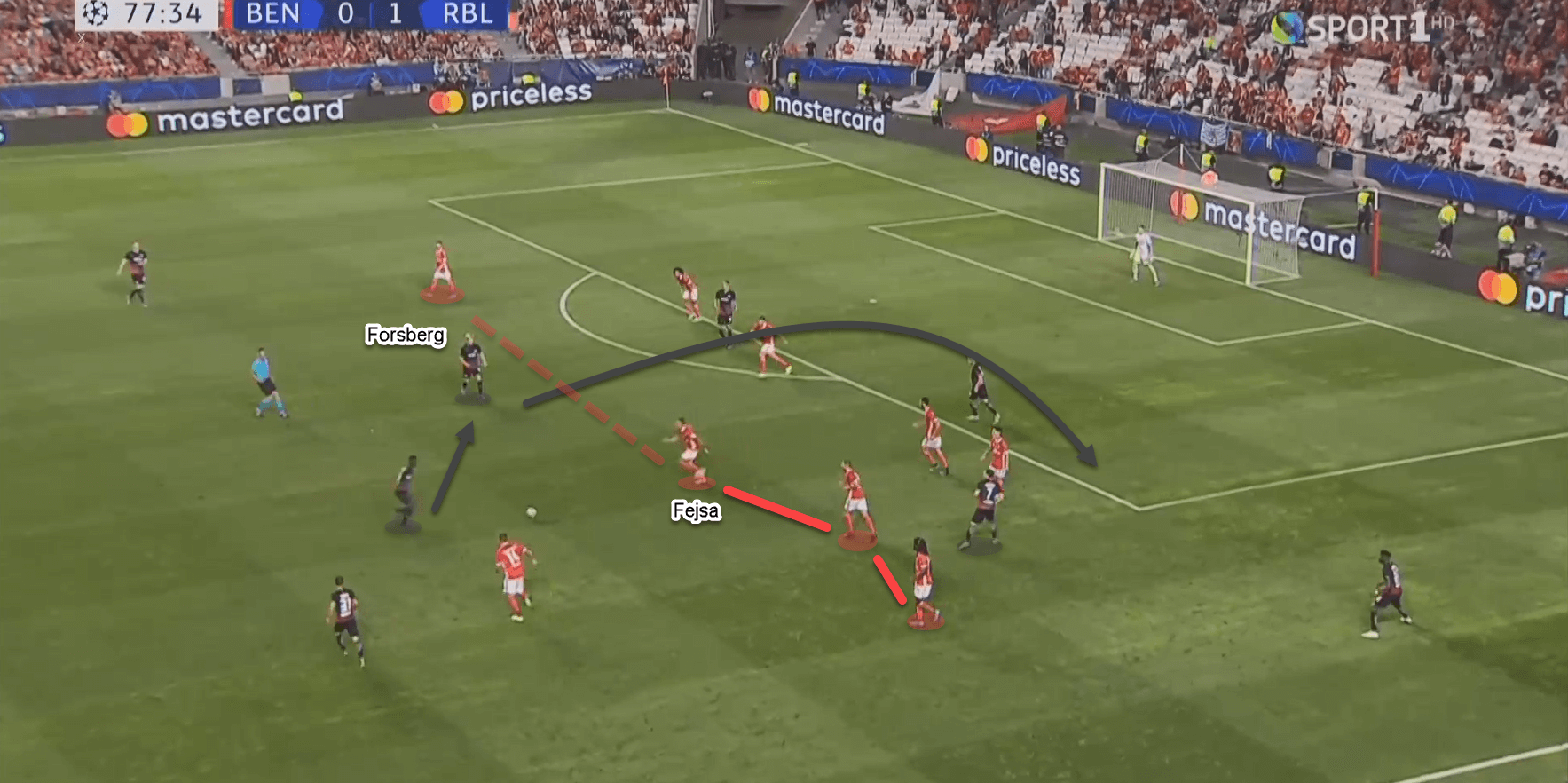
In this image showing the build-up to the goal, we see the same pattern emerge. To begin with, Fejsa is positioned too far over to the left as a result of trying to close down play in what should be Adel Taarabt’s zone of the pitch. The Moroccan is, of course, Fejsa’s midfield partner and they ought to be positioned side by side in order to occupy space and block passing lanes, especially since Benfica are set in such a deep block.
Fejsa has tried to be everywhere at once though, and the result is that when he tries to close down Haidara, the Malian midfielder can play a simple pass to Forsberg, who has stepped into the empty space in Benfica’s midfield line. The Swedish international is then free to play a delightful chip into the path of number seven Marcel Sabitzer, who coolly squares the ball for Werner to score Leipzig’s second.
Benfica hit back
In an entertaining end to the match, Benfica managed to claw a goal back through a move which serves as a prime example of the threat that the Portuguese side pose on the counter, but which also exposes a weakness in Leipzig’s tactics.
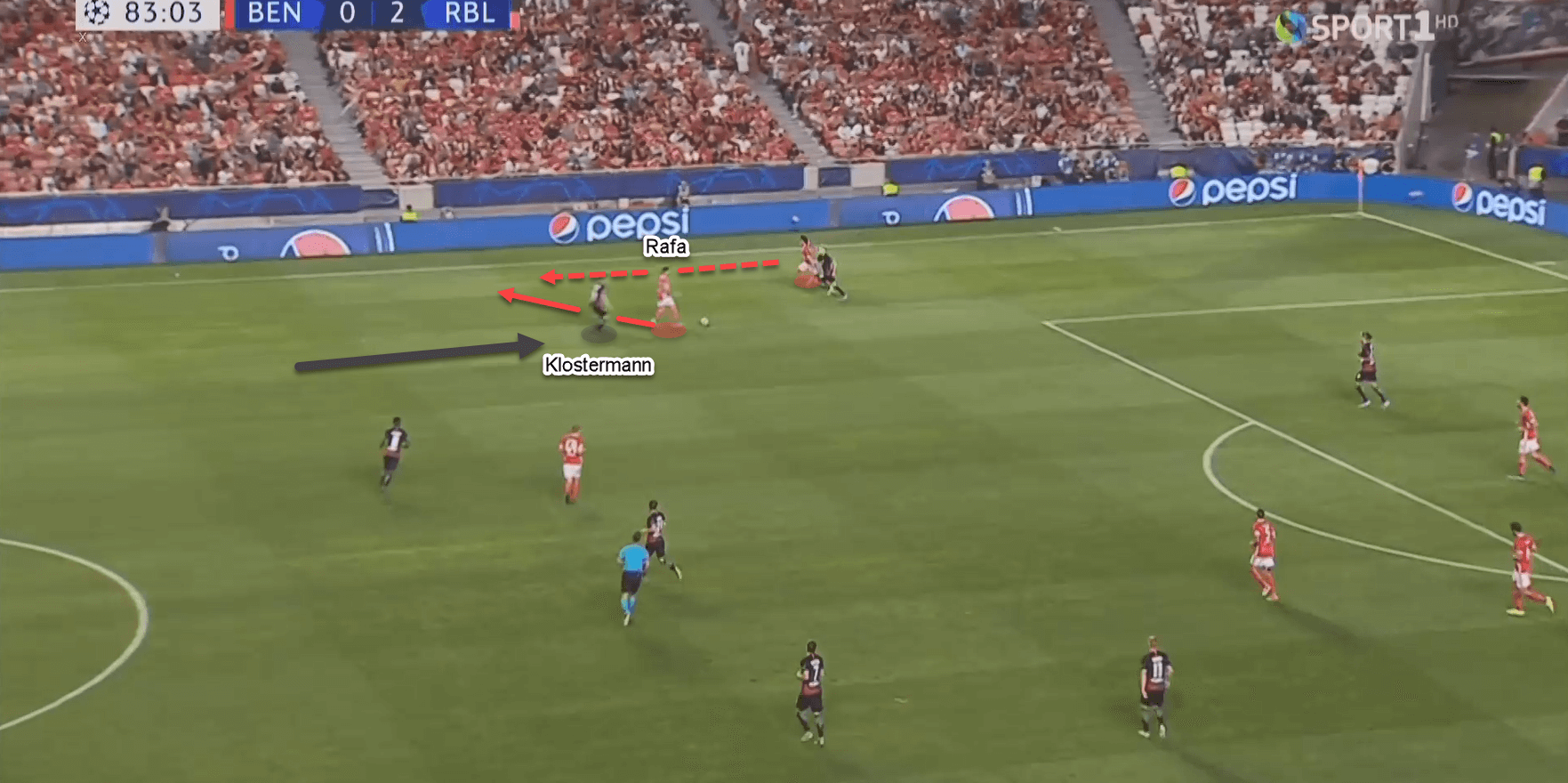
In this first image we can see how Leipzig’s left-back Klostermann (who has just come on as a substitute) has pushed extremely far into Benfica’s half in order to engage Rafa Silva, Benfica’s speedy winger who had also come on from the subs’ bench.
This is exactly the same high pressing tactic we saw from Leipzig at the beginning of the game, as we highlighted in the first section of this analysis. What is odd now is that they are continuing to press high in this way in the 84th minute of the game and with a 2-0 lead to protect. Not only is Klostermann high up the pitch but the whole midfield have taken up advanced positions, creating a worryingly large gap between defence and midfield.
Embarrassingly for Klostermann, Rafa Silva managed to nutmeg him to free teenage full-back Tavares down the right flank.
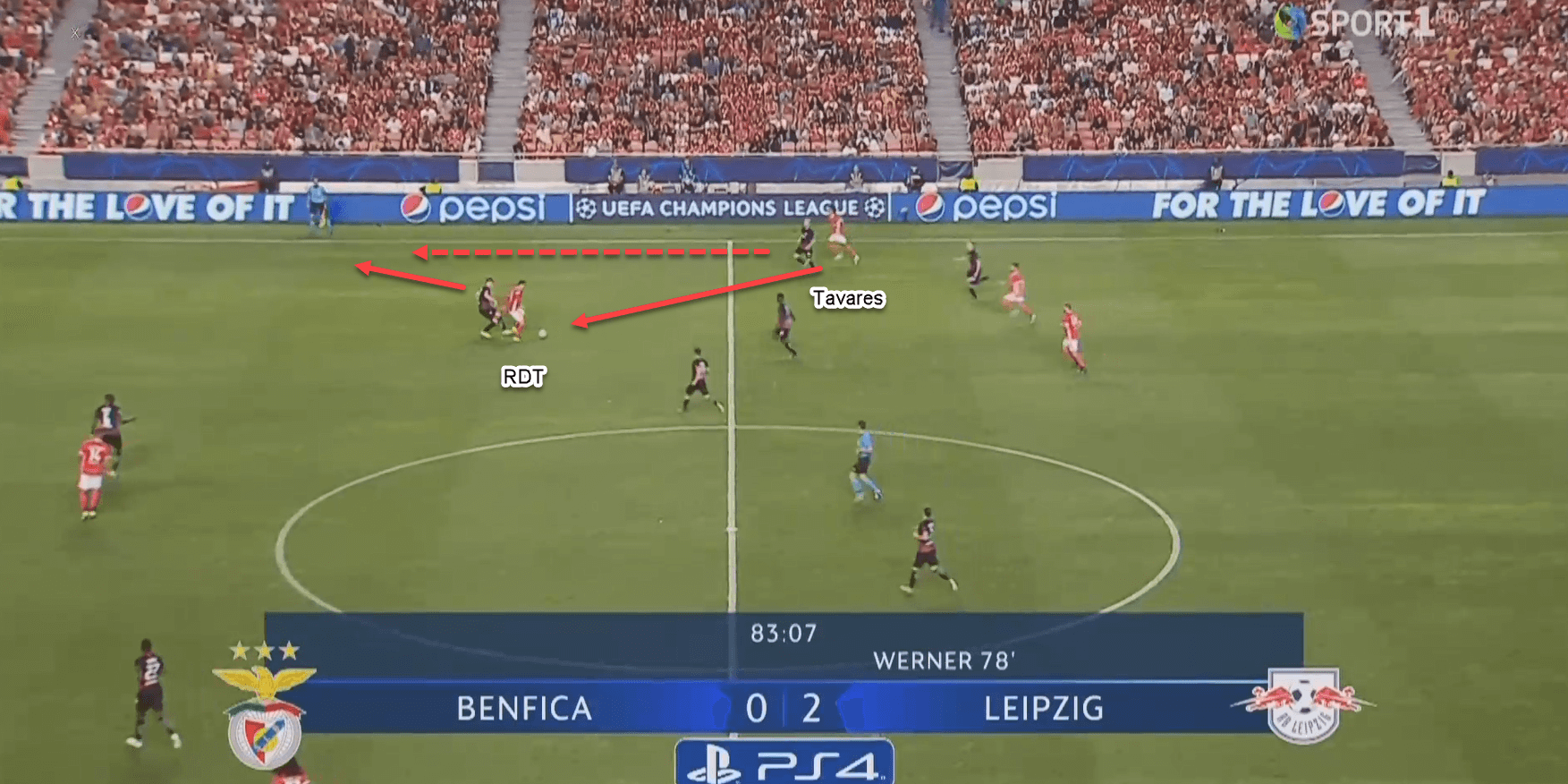
As the counter-attack progresses, Tavares is able to play another one-two, this time with de Tomás. You will notice that de Tomás has dropped deep to receive the ball, in the same way that Jota was doing before he was substituted. You will also notice that the centre-back has stepped out to close de Tomás down, yet this time there is no pincer movement like the one employed against Jota. No midfielders are close enough because the gap between Leipzig’s defensive and midfield lines was so large as a result of the failed high press.
This gave de Tomás all the time and space he needed to play the ball back to Tavares as Benfica honed in on goal.
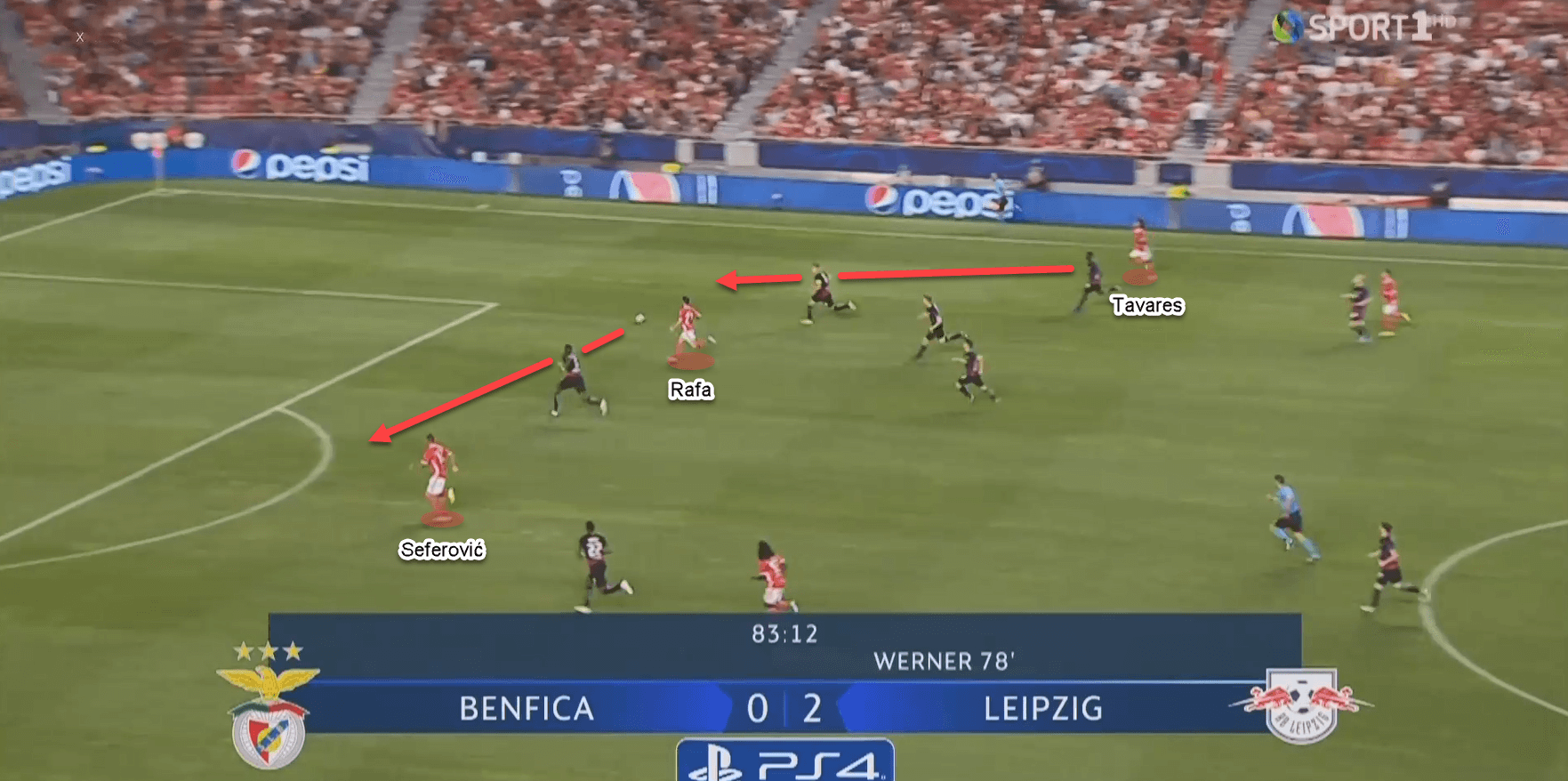
Conclusion
This encounter took a while to get going as both sides fought keenly to win the battle for the midfield. But once Benfica admitted defeat in that contest the game came alive as we got to savour some free-flowing end-to-end football as the home side looked to hit the Germans on the counter-attack.
It was an impressive performance in many ways from Leipzig as they demonstrated that they had a well-rehearsed gameplan on how to stop Benfica from playing, and they executed it with precision. Given the nature of Benfica’s late goal though, questions will have to be asked of Julian Nagelsmann’s game management and whether it was wise to continue to press so high up the pitch at such a late stage in the game.

If you love tactical analysis, then you’ll love the digital magazines from totalfootballanalysis.com – a guaranteed 100+ pages of pure tactical analysis covering topics from the Premier League, Serie A, La Liga, Bundesliga and many, many more. Buy your copy of the August issue for just ₤4.99 here





Comments